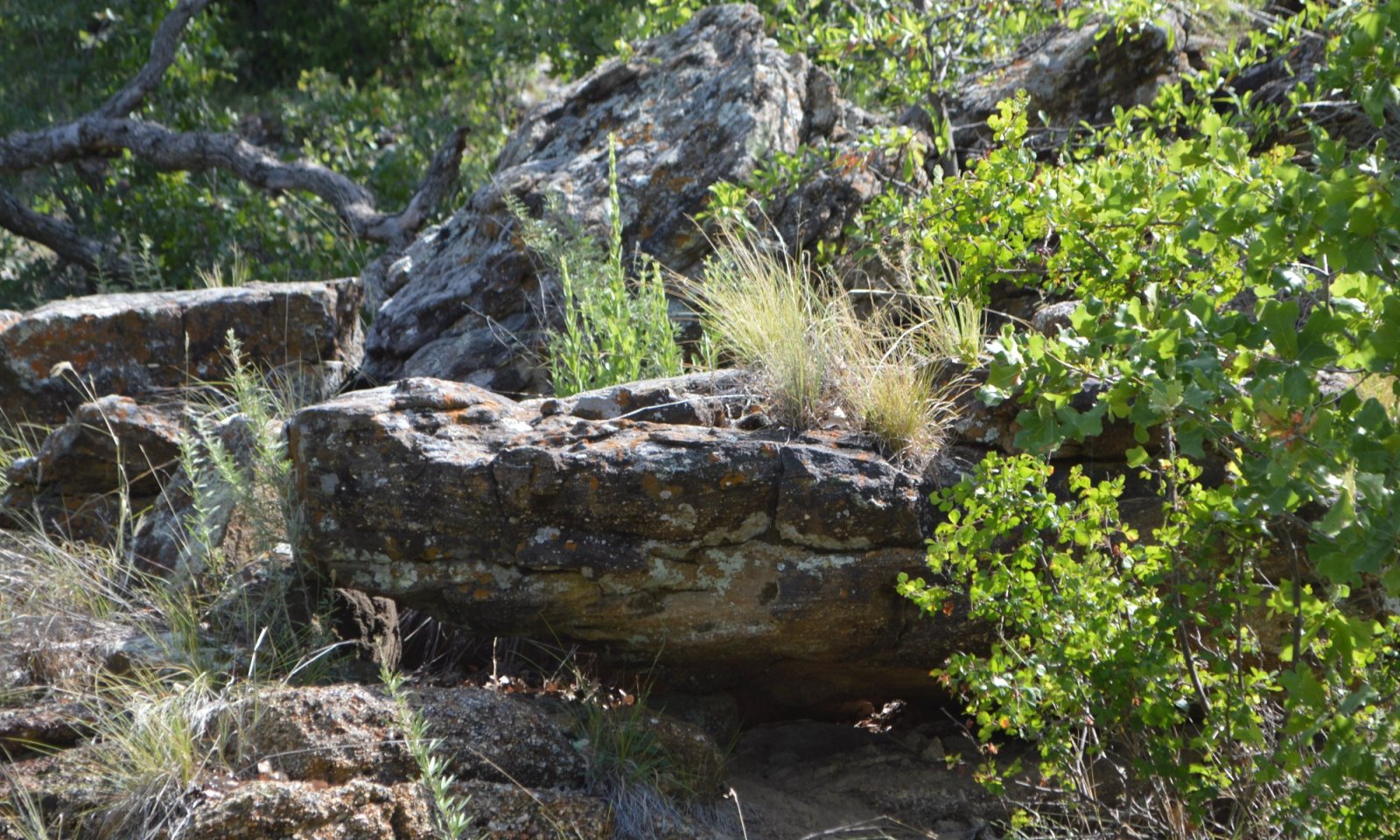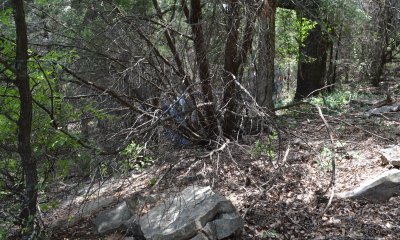
Bouldery Hill 26-33
Scenario model
Current ecosystem state
Select a state
Management practices/drivers
Select a transition or restoration pathway
- Transition T1A More details
- Restoration pathway R2A More details
-
No transition or restoration pathway between the selected states has been described
Target ecosystem state
Select a state
Description
This is the reference state for the Bouldery Hill ecological site. It represents the historic range of variability in the plant communities with the periodic disturbance of fire. It is a mosaic of herbaceous plants, oak species and woody understory vines and shrubs.
The dominant trees are post oak and black jack oak with a mixture of tall and Midgrasses, forbs and shrubs in the understory and canopy interspaces. Dominant herbaceous plants include little bluestem, indiangrass and sideoats grama. Other grasses include dropseeds, sedges, wildryes and scribner’s panicum. Forbs include Sunflowers, tickclover, lespedezas, wildbeans, yellow Neptune, western ragweed and sagewort. Other woody plants include elms, greenbriar, plums, grapes, coralberry, and Carolina snailseed. These woody species will increase in ground cover in the absence of fire.
Woody canopy in the reference state is complex with some areas having dense oak canopy mixed with multiple prairie openings. For planning and management purposes, the average woody canopy in reference condition can be described as less than 40%.
The Sandy Loam site is estimated to produce between 700 – 2,000 pounds of vegetative production per year in reference condition.
Midgrasses greater than Tallgrasses equal Trees greater than Shrubs greater than Forbs
Characteristics and indicators
Plant type / Low/ RV/ High
Grass/Grasslike/ 490/ 840/ 1400
Forb/ 35/ 60/ 100
Shrub/Vine/ 70/ 120/ 200
Tree/ 105/ 180/ 300
Total / 700/ 1200/ 2000
Description
This state represents the shift to a woody dominated plant community with woody canopy exceeding 60%. Trees and shrubs dominate the ecological processes on the site and the herbaceous grasses and forbs are limited to shade tolerant species. There is an abundance of leaf litter build up which further limits herbaceous plant germination and production.
Mechanism
Without periodic fire or brush management the reference state will transition to the Closed Canopy Woodland state. Woody species will continue to increase and lead to mesophication of the plant community with increased woody canopy and increase in shade tolerant species.
Mechanism
At this point it will take significant inputs to remove woody species and restore the savannah state. This will require some selective thinning of woody species and the re-introduction of fire to the ecosystem. This process may take 5 years or more depending on woody canopy and past management.
Relevant conservation practices
| Practice | External resources |
|---|---|
|
Brush Management |
|
|
Prescribed Burning |
|
|
Firebreak |
Model keys
Briefcase
Add ecological sites and Major Land Resource Areas to your briefcase by clicking on the briefcase (![]() ) icon wherever it occurs. Drag and drop items to reorder. Cookies are used to store briefcase items between browsing sessions. Because of this, the number of items that can be added to your briefcase is limited, and briefcase items added on one device and browser cannot be accessed from another device or browser. Users who do not wish to place cookies on their devices should not use the briefcase tool. Briefcase cookies serve no other purpose than described here and are deleted whenever browsing history is cleared.
) icon wherever it occurs. Drag and drop items to reorder. Cookies are used to store briefcase items between browsing sessions. Because of this, the number of items that can be added to your briefcase is limited, and briefcase items added on one device and browser cannot be accessed from another device or browser. Users who do not wish to place cookies on their devices should not use the briefcase tool. Briefcase cookies serve no other purpose than described here and are deleted whenever browsing history is cleared.
Ecological sites
Major Land Resource Areas
The Ecosystem Dynamics Interpretive Tool is an information system framework developed by the USDA-ARS Jornada Experimental Range, USDA Natural Resources Conservation Service, and New Mexico State University.


